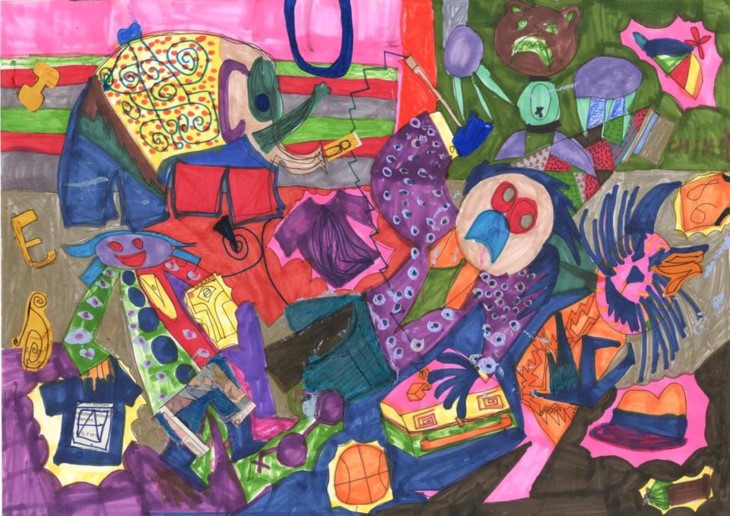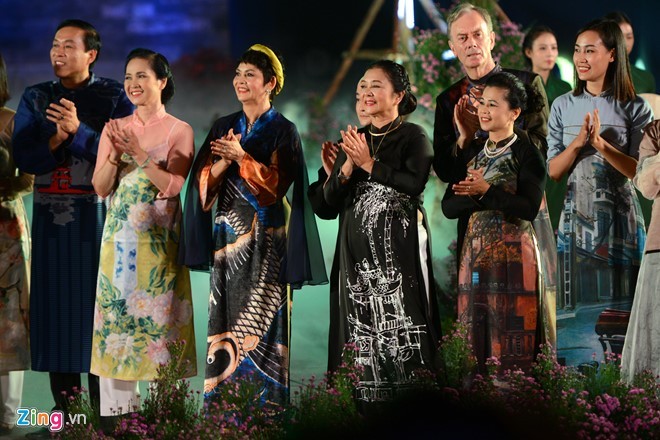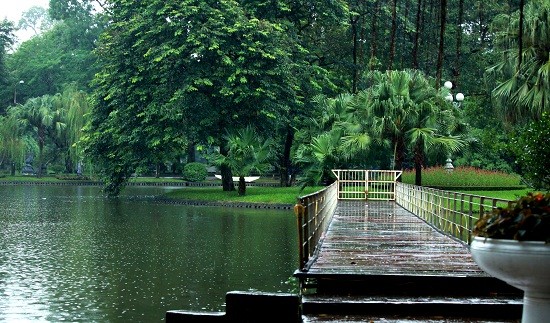(VOVWORLD) - Welcome to the Letter Box, our weekly feature dedicated to listeners around the world.
A: First on our show, we’d like to welcome Nikki Kumar of India to VOV. Mrs. Kumar listened to our broadcast on March 21st at 18:00 UTC on the frequency of 7280 khz and expressed her joy at listening to our program.
B: Thank you for tuning in to our broadcast. We’ll send you our frequency list, program schedule, and a QSL card to confirm your report. We hope to hear more from you.
A: We’d like to thank Grant Skinner of the UK for his regular reports and letters to VOV. In his most recent letter to us, Mr. Skinner reported on a broadcast on March 14 on the frequency of 9730 and gave it SINPO of all 5s. He wrote: “I’m sending you respect and honor with high compliments. Listening to your radio station has given me satisfaction over the years and widened my knowledge due to your programs and the experience of the staff working at the station.”
B: Thank you for your compliments. They encourage us a lot to continue our shortwave broadcast. We look forward to receiving more feedback from you.
 Painting by an autistic artist is showcased at IU.IU.IU Exhibit Painting by an autistic artist is showcased at IU.IU.IU Exhibit |
A: This week, Richard Nowak of the US expressed his interest in our Sunday show about autism. “The Sunday show on autism was great. It showcased the artistic works of children. The show explained very well how autism affects a child’s ability to communicate. The children need more love. Weekly programs for children with special backgrounds and artworks from the classes are exhibited so the children can earn money from what they make. The announcer explained how autistic children need more love but can’t tell us what they want. When happy, the colors they paint with are bright. When sad, their colors are dark. This is fascinating. Thanks for the show.”
B: In a letter to VOV this week, Fumito Hokamura of Japan sent a reception report for the program on March 4th on the frequency of 9840 khz and expressed his interest in our story about Ao Dai or Vietnamese long dress.
 Vietnamese artists in traditional long dresses at the 2016 Ao Dai Vietnamese artists in traditional long dresses at the 2016 Ao Dai |
B: The Ao Dai is a Vietnamese traditional dress, most commonly worn by women but can also be worn by men. It is a tight-fitting silk tunic worn over trousers.
A: The word "ao dai" was originally applied to the outfit worn at the court of the Nguyen Lord at Hue in the 18th century. This outfit evolved into the áo ngũ thân, a five-paneled aristocratic gown worn in the 19th and early 20th centuries. Inspired by Paris fashions, Nguyễn Cát Tường and other artists associated with Hanoi University redesigned the ngũ thân as a modern dress in the 1920s and 1930s. The updated look was then promoted as a national costume for the modern era. In the 1950s, Saigon designers tightened the fit to produce the version worn by Vietnamese women today.
A: Academic commentary on the ao dai emphasizes the way the dress ties feminine beauty to Vietnamese nationalism. "Ao dai" is one of the few Vietnamese words that appear in English-language dictionaries.
B: The Ao Dai is now a standard for weddings and other formal occasions. It's the required uniform for female teachers and female students in common high schools in the South. Companies often require their female staff to wear uniforms that include the ao dai, so flight attendants, receptionists, bank female staff, restaurant staff, and hotel workers in Vietnam may be seen wearing it.
B: In recent years, “Ao Dai” has changed with many innovations, combining ethnic culture with modern fashion elements, creating its unique style in performances at International Fashion Week, the formal and superficial festival, even in Beauty Contests. Many Vietnamese dress designers are well-known on the international stage such as Minh Hanh, Sy Hoang, Vo Viet Chung, and La Hang. They all contribute to bring fame to Vietnamese Ao Dai - the cultural icon of Vietnam.
A: Muhammad Shamims of India listened to our broadcast on April 4 on the frequency of 7280 khz from 16:00 to 16:30 UTC. He asked about botanical gardens and research centers in Vietnam.
B: In Vietnam, there are several botanical gardens in major cities and provinces. The Hanoi Botanical Garden also known as Bach Thao Park has been known as the green lung of the capital for more than 100 years. This is a small world of opulence with greenery all around which visitors should not miss when visiting Hanoi.
 Hanoi Botanical garden Hanoi Botanical garden |
A: The park was established by the French in 1890 with the garden stretched over an area of 33 hectares. Beside indigenous plants, many exotic tropical plants from all over the world were brought here and made up into a rain-forest right at the heart of the city. It was later narrowed to make room for construction of the Ba Dinh historical complex. Now covering only 10 hectares, it is still a favorite place for locals.
B: Hanoi Botanical Garden is home to numerous kinds of trees that are typical of tropical rain-forests like: coconut, palm, orchid, banyan tree, etc. Two thirds are indigenous plants, and the rest are imported from other tropical regions of Africa, America and Oceania. There are old big trees that take two or three people to hug around.
A: As a complex of garden, hill and lake, the botanical garden is where people come to rest under the trees, take a walk around the lake, or watch pigeons on the islet. Its bridge and the hill are popular among the locals as nice places for taking wedding photos. Everyday lots of local people come here for a walk, to play chess in leisure time or just to relax after a hard workday.
B: We’d like to acknowledge emails and letters from Shivendu Paul, Siddhartha Bhattacharjee, Bhaikan Hazarika, and Deekay Dimple, and Eddy Prabowo of Indonesia. We greatly appreciate your feedback and comments on the technical aspects of our programming. We’ll confirm your reports with QSL cards soon.
A: We welcome your feedback at: English section, VOVworld, Radio the Voice of Vietnam, 45 Ba Trieu Street, Hanoi, Vietnam. Or you can email us at: englishsection@vov.org.vn. You’re invited to visit us online at vovworld.vn, where you can hear both live and recorded programs. Check out our VOV Media App available on both IOS and Android platforms to hear our live broadcasts. We look forward to your feedback on the mobile version of vovworld.vn. Once again, thank you all. Good bye until next time.